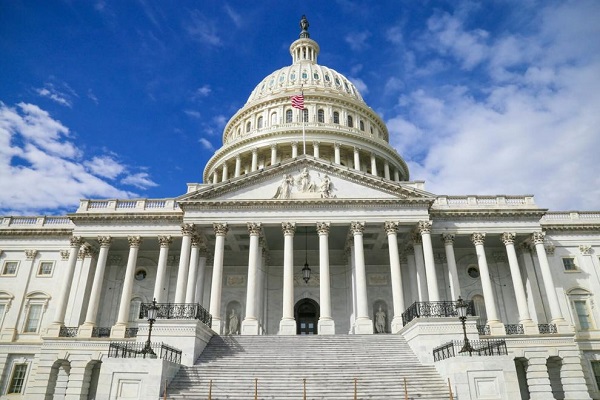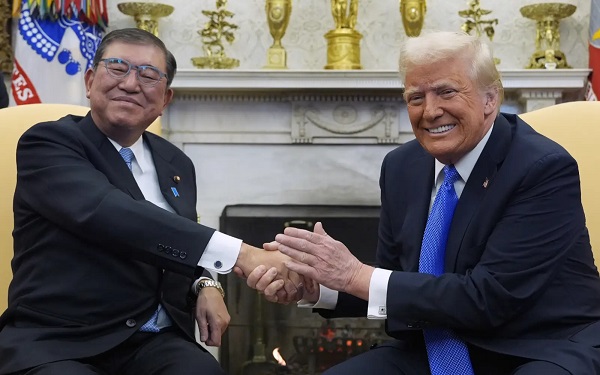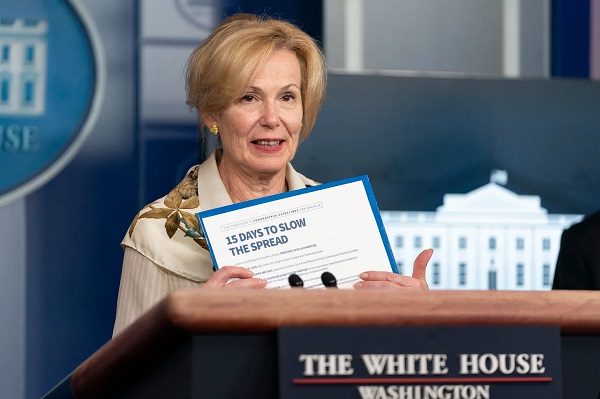Censorship Industrial Complex
Trudeau government ‘gaslighting’ critics of Online Harms Act, legal expert warns

From LifeSiteNews
Dr. Michael Geist pointed out that Bill C-63 gives a digital safety commission an astonishing array of powers with limited oversight.
One of Canada’s top legal pundits warned that the federal government of Prime Minister Justin Trudeau is “ready” to “gaslight” opponents of a new bill that could lead to jail time for vaguely defined online “hate speech” infractions.
In recent an opinion piece critical of Bill C-63, which is the Online Harms Act that was introduced in the House of Commons on February 26, law professor Dr. Michael Geist said that the text of the bill is “unmistakable” in how it will affect Canadians’ online freedoms.
Geist noted that the new bill will allow a new digital safety commission to conduct “secret commission hearings” against those found to have violated the new law.
“The poorly conceived Digital Safety Commission lacks even basic rules of evidence, can conduct secret hearings, and has been granted an astonishing array of powers with limited oversight. This isn’t a fabrication,” Geist wrote.
He observed specifically how Section 87 of the bill “literally” says “the Commission is not bound by any legal or technical rules of evidence.”
The Liberals under Trudeau claim Bill C-63 will target certain cases of internet content removal, notably those involving child sexual abuse and pornography.
The reality is that the federal government under Trudeau has gone all in on radical transgender ideology, including the so-called “transitioning” of minors, while at the same time introducing laws that on the surface appear to be about helping children.
As for Geist, he noted that when it comes to Bill C-63, the “most obvious solution” to amend the bill “is to cut out the Criminal Code and Human Rights Act provisions, which have nothing to do with establishing Internet platform liability for online harms.”
“Instead, the government seems ready yet again to gaslight its critics and claim that they have it all wrong,” Geist said. “But the text of the law is unmistakable and the initial refusal to address the concerns is a mistake that, if it persists, risks sinking the entire bill.”
Bill C-63 was introduced by Justice Minister Arif Virani and then immediately blasted by constitutional experts as troublesome.
Bill C-63 will modify existing laws, amending the Criminal Code as well as the Canadian Human Rights Act, in what the Liberals claim will target certain cases of internet content removal, notably those involving child sexual abuse and pornography.
One of Canada’s foremost constitutional rights groups, the Justice Centre for Constitutional Freedoms (JCCF), warned that the proposed “Online Harms Act” is a serious threat to freedom of “expression” and could lead to “preemptive punishment for crimes not committed.”
Geist observed that the Trudeau government with Bill C-63 “is ready to run back the same playbook of gaslighting and denials that plagued” as it did with its other internet censorship Bills C-11 and C-18.
“Those bills, which addressed Internet streaming and news, faced widespread criticism over potential regulation of user content and the prospect of blocked news links on major Internet platforms. Rather than engage in a policy process that took the criticism seriously, the government ignored digital creators (including disrespecting indigenous creators) and dismissed the risks of Bill C-18 as a bluff,” Geist wrote.
“The results of that strategy are well-known: Bill C-11 required a policy direction fix and is mired in a years-long regulatory process at the CRTC and news links have been blocked for months on Meta as the list of Canadian media bankruptcies and closures mount.”
Geist observed that Bill C-63 had “offered the chance for a fresh start,” but instead there “were red flags,” particularly with respect to the “Digital Safety Commission charged with enforcing the law and with the inclusion of Criminal Code and Human Rights Act provisions with overbroad penalties and the potential to weaponize speech complaints.”
“The hope – based on the more collaborative approach used to develop the law – was that there would be a ‘genuine welcoming of constructive criticism rather than the discouraging, hostile processes of recent years,’” Geist wrote.
“Two weeks in that hope is rapidly disappearing,” he added.
Geist observed that Bill C-63’s changes to the Human Rights Act “absolutely open the door to the weaponization of complaints for communication of hate speech online that ‘is likely to foment detestation or vilification of an individual or group of individuals on the basis of a prohibited ground of discrimination.’”
Indeed, the bill, as per Section 13.1, would allow for those found in violation to face penalties up to $20,000 for the complainant as well as up to $50,000 to the government (Section 53.1).
LifeSiteNews has previously reported that many, including prominent Canadians who are not known to be conservative such as author Margaret Atwood, oppose Bill C-63. Additionally, billionaire Elon Musk and Jordan Peterson have been critical of Bill C-63.
Marty Moore, litigation director for the JCCF-funded Charter Advocates Canada, previously told LifeSiteNews that Bill C-63 will allow a new digital safety commission to conduct “secret commission hearings” against those found to have violated the new law, raising “serious concerns for the freedom of expression” of Canadians online.
The JCCF launched a petition, which can be signed here, calling on Trudeau to “stop” the Online Harms Act.
Business
Apple removes security feature in UK after gov’t demands access to user data worldwide
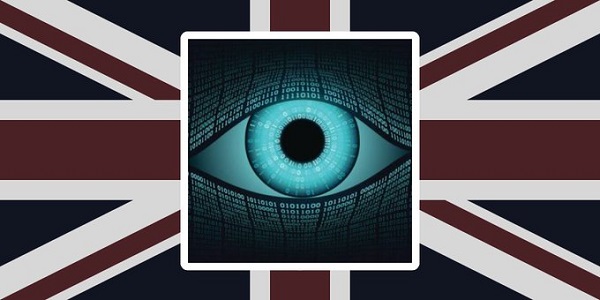
From LifeSiteNews
The decision was otherwise roundly condemned on X as “horrific,” “horrendous,” the hallmark of a “dictatorship,” and even “the biggest breach of privacy Western civilization has ever seen.”

Apple Store on New York’s Fifth Avenue.
Apple pulled its highest-level security feature in the U.K. after the government ordered the company to give it access to user data.
The U.K. government demanded “blanket access” to all user accounts around the world rather than to specific ones, a move unprecedented in major democracies, according to The Washington Post.
The security tool at issue in the U.K. is Advanced Data Protection (ADP), which provides end-to-end encryption so that only owners of particular data – and reportedly not even Apple – can access it.
“Apple can no longer offer Advanced Data Protection (ADP) in the United Kingdom to new users and current UK users will eventually need to disable this security feature,” an Apple spokesman said.
According to Apple, the removal of ADP will not affect iCloud data types that are end-to-end encrypted by default such as iMessage and FaceTime.
The nine iCloud categories that will reportedly no longer have ADP protection are iCloud Backup, iCloud Drive, Photos, Notes, Reminders, Safari Bookmarks, Siri Shortcuts, Voice Memos, Wallet Passes, and Freeform.
These types of data will be covered only by standard data protection, the default setting for accounts.
Journalist and Twitter Files whistleblower Michael Schellenberger slammed the U.K.-initiated move as “totalitarian.”
The decision was otherwise roundly condemned on X as “horrific,” “horrendous,” the hallmark of a “dictatorship,” and even “the biggest breach of privacy Western civilization has ever seen.”
Elon Musk declared Friday that such a privacy breach “would have happened in America” if President Donald Trump had not been elected.
Jake Moore, global cybersecurity adviser at ESET, commented that the move marks “a huge step backwards in the protection of privacy online.”
“Creating a backdoor for ethical reasons means it will inevitably only be a matter of time before threat actors also find a way in,” Moore said.
Britain reportedly made the privacy invasion demand under the authority of the Investigatory Powers Act of 2016.
Censorship Industrial Complex
Bipartisan US Coalition Finally Tells Europe, and the FBI, to Shove It

FLICKER OF HOPE? Left, Senator Ron Wyden. Middle, Director of National Intelligence Tulsi Gabbard. Right, Rep. Andy Biggs
 Racket News By Matt Taibbi
Racket News By Matt Taibbi
While J.D. Vance was speaking in Munich, the U.K. was demanding encrypted data from Apple. For the first time in nine years, America may fight back
Last Friday, while leaders around the Western world were up in arms about J.D. Vance’s confrontational address to the Munich Security Council, the Washington Post published a good old-fashioned piece of journalism. From “U.K. orders Apple to let it spy on users’ encrypted accounts”:
Security officials in the United Kingdom have demanded that Apple create a back door allowing them to retrieve all the content any Apple user worldwide has uploaded to the cloud, people familiar with the matter told The Washington Post.…
[The] Home Secretary has served Apple with… a technical capability notice, ordering it to provide access under the sweeping U.K. Investigatory Powers Act of 2016, which authorizes law enforcement to compel assistance from companies… The law, known by critics as the Snoopers’ Charter, makes it a criminal offense to reveal that the government has even made such a demand.
This rare example of genuine bipartisan cooperation is fascinating for several reasons. Oregon’s Ron Wyden teamed up with Arizona Republican Congressman Andy Biggs to ask new Director of National Intelligence Tulsi Gabbard for help in beating back the British. While other Democrats like Michael Bennet and Mark Warner were smearing Gabbard as a Russian proxy in confirmation hearings, Wyden performed an homage to old-school liberalism and asked a few constructive questions, including a request that Gabbard recommit to her stance against government snatching of encrypted data. Weeks later, the issue is back on the table, for real.
The original UK demand is apparently nearly a year old, and Apple has reportedly been resisting internally. But this show of political opposition is new. There has been no real pushback on foreign demands for data (encrypted or otherwise) for almost nine years, for an obvious reason. Europe, the FBI, and the rest of the American national security apparatus have until now mostly presented a unified front on this issue. In the Trump era especially, there has not been much political room to take a stand like the one Wyden, Biggs, and perhaps Gabbard will be making.
The encryption saga goes back at least ten years. On December 2, 2015, two men opened fire at the Inland Center in San Bernardino, killing 14 and injuring 22. About two months later, word got out that the FBI was trying to force Apple to undo its encryption safeguards, ostensibly to unlock the iPhone of accused San Bernardino shooter Syed Rizwan Farook. The FBI’s legal battle was led by its General Counsel Jim Baker, who later went to work at Twitter.
One flank of FBI strategy involved overhauling Rule 41 of the Rules of Criminal Procedure. The FBI’s idea was that if it received a legal search warrant, it should be granted power to use hacking techniques, if the target is “concealed through technological means.” The Department of Justice by way of the Supreme Court a decade ago issued this recommendation to Congress, which under a law called the Rules Enabling Act would go into force automatically if legislation was not passed to stop it. In 2016, Wyden joined up with Republican congressman Ted Poe to oppose the change, via a bill called the Stopping Mass Hacking Act.
Two factors conspired to kill the effort. First, the FBI had already won its confrontation with Apple, obtaining an order requiring the firm (which said it had no way to break encryption) to write software allowing the Bureau to use “brute force” methods to crack the suspect’s password. While Apple was contesting, the FBI busted the iPhone anyway by hiring a “publicity-shy” Australian firm called Azimuth, which hacked the phone a few months after the attack. The Post, citing another set of “people familiar with the matter,” outed the company’s name years later, in 2021.
The broader issue of whether government should be allowed to use such authority in all cases was at stake with the “Stopping Mass Hacking” bill. It was a problem for the members that the FBI called its own shot in the San Bernardino case, but the fatal blow came on November 29, 2016, when the UK passed the bill invoked last week, called the Investigatory Powers Act. This legal cheat code gave agencies like Britain’s GHCQ power to use hacking techniques (called “equipment interference”) and to employ “bulk” searches using “general” warrants. Instead of concrete individuals, the UK can target a location or a group of people who “share a common purpose”:
The law was and is broad in a darkly humorous way. It mandates that companies turn over even encrypted data for any of three reasons: to protect national security, to protect the “economic well-being of the UK,” and for the “prevention or detection of serious crime.”
Once the Act passed, American opposition turtled. How to make a stand against FBI hacking when the Bureau’s close partners in England could now make such requests legally and without restriction? The Wyden-Poe gambits were wiped out, and just two days after the IPA went into effect, changes to Rule 41 in America did as well. These granted American authorities wide latitude to break into anything they wanted, provided they had a warrant. As one Senate aide told me this week, “That was a game-over moment.”
Once the British got their shiny new tool, they weren’t shy about using it. The Twitter Files were full of loony “IPA” dramas that underscored just how terrifying these laws can be. In one bizarre episode in August of 2021, Twitter was asked to turn over data on soccer fans to a collection of alphabet soup agencies, including the Home Office and the “Football Policing Unit.” The Football Police informed Twitter that “in the UK… using the ‘N word’ is a criminal offence — not a freedom of speech issue.”
Twitter executives scrambled to explain to football’s cyber-bobbies that many of their suspects were black themselves, and tweets like “RAHEEM STERLING IS DAT NIGGA” were not, in fact, “hateful conduct.” (The idea that British police needed American executives to interpret sports slang is a horror movie in itself.) Accounts like @Itsknockzz and @Wavyboomin never knew how close they came to arrest:
 |
N**** PLEASE: British police invoked the Investigatory Powers Act to get user information about nonwhite football fans
British overuse was obvious, but Twitter elected not to complain. They also kept quiet when American authorities began pushing for the same power. Though the Apple standoff aroused controversy, 50% of Americans still supported the FBI’s original stance against encryption, which seemed to embolden the Bureau. Senior officials began asking for the same virtually unlimited authority their friends in the UK (and soon after, Australia) were asserting. Donald Trump’s Attorney General, William Barr, seethed about encryption in a keynote speech at an International Cybersecurity Conference on July 23rd, 2019. The Justice Department was tiring of negotiations with tech companies on the issue, Barr said:
While we remain open to a cooperative approach, the time to achieve that may be limited. Key countries, including important allies, have been moving toward legislative and regulatory solutions. I think it is prudent to anticipate that a major incident may well occur at any time that will galvanize public opinion on these issues.
God knows what he meant about a “major incident” that “may well occur at any time,” but Barr was referring to the Investigatory Powers Act and imitator bills that by 2019 were being drafted by most U.S. intelligence partners.
Even without a central “incident,” European officials have been pursuing the dream of full “transparency” into user data ever since, often with support from American politicians and pundits. It was not long ago that Taylor Lorenz was writing outrage porn in the New York Times about the “unconstrained” and “unfettered conversations” on the Clubhouse App. As Lorenz noted, Clubhouse simply by being hard to track aroused the hostility of German authorities, who wrote to remind the firm about European citizens’ “right to erasure” and “transparent information”:
Providers offering services to European users must respect their rights to transparent information, the right of access, the right to erasure and the right to object.
Eventually, the EU tried to submarine end-to-end encryption through dystopian bills like “Chat Control,” which would have required platforms to actively scan user activity for prohibited behavior. This concept was widely criticized even in Europe, and in the States, which was mostly still in the grip of “freedom causes Trump” mania, TechCrunch called it “Hella Scary.”
Chat Control just barely stalled out in October, thanks to the Dutch, but Europe’s feelings about encryption were still more than made clear with this past summer’s arrest of Telegram founder Pavel Durov. That event was largely cheered in the U.S. press, where Durov was accused of actively “hiding illegal behavior,” and turning his platform into a “misinformation hot spot” used by “far right groups,” “neo-Nazis,” and “Proud Boys and QAnon conspiracy theorists.” The consensus was Durov himself was helping sink the concept of encryption.
“If we assume this becomes a fight about encryption, it is kind of bad to have a defendant who looks irresponsible,” was how Stanford Cyber Policy Analyst Daphne Keller described Durov to the New York Times after his arrest.
The Durov arrest may have marked the moment of peak influence for the cyber-spook movement. Though the Investigatory Powers Act was a major political surveillance tool, it was far from the only important law of its type, or the most powerful. The IPA was in fact just one of a long list of acronyms mostly unfamiliar to American news consumers, from France’s LCEN to Germany’s NetzDG to the EU’s TERREG as well as its Code of Practice on Disinformation and Code of Conduct on Countering Illegal Hate Speech Online, among many others. American authorities usually followed the pattern in the case of encryption and the IPA, doing informally what European counterparts were able to effect openly and with the force of law.
Now however it looks like efforts by government officials to completely wipe out encryption have failed, and events have taken a new turn. “Wild,” is how the Senate aide characterized the Wyden-Biggs letter, resuming another bipartisan fight put on hold nine years ago. “I’d forgotten what this looks like.”
Subscribe to Racket News.
For the full experience, become a paying subscriber.
-

 Censorship Industrial Complex2 days ago
Censorship Industrial Complex2 days agoBipartisan US Coalition Finally Tells Europe, and the FBI, to Shove It
-

 Business2 days ago
Business2 days agoNew climate plan simply hides the costs to Canadians
-

 Business1 day ago
Business1 day agoArgentina’s Javier Milei gives Elon Musk chainsaw
-

 Business2 days ago
Business2 days agoGovernment debt burden increasing across Canada
-
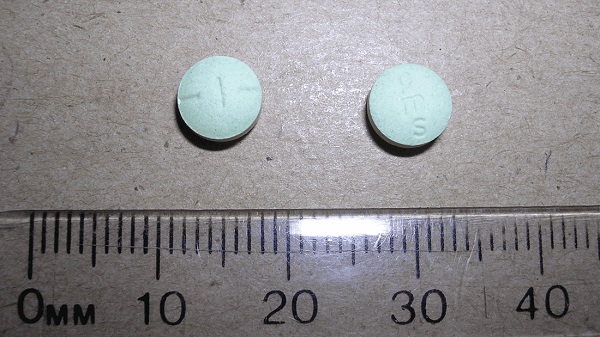
 Addictions1 day ago
Addictions1 day agoBC overhauls safer supply program in response to widespread pharmacy scam
-

 International1 day ago
International1 day agoJihadis behead 70 Christians in DR Congo church
-
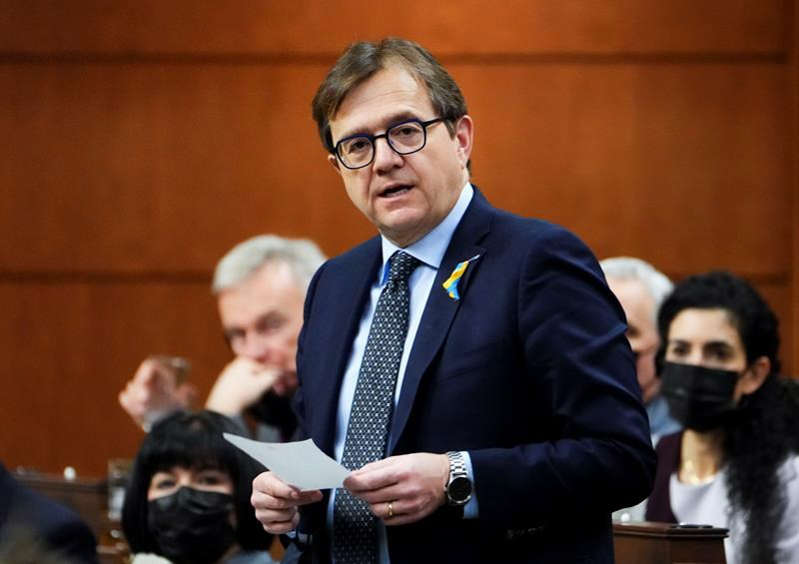
 Energy9 hours ago
Energy9 hours agoFederal Government Suddenly Reverses on Critical Minerals – Over Three Years Too Late – MP Greg McLean
-

 Alberta1 day ago
Alberta1 day agoOpen letter to Ottawa from Alberta strongly urging National Economic Corridor






